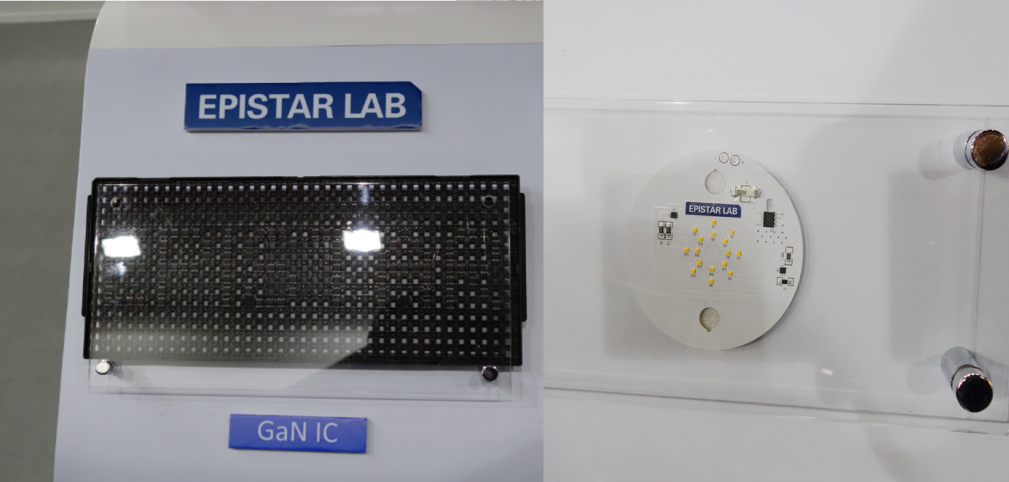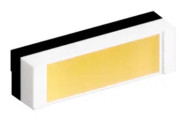(Author: Roger Chu, Research Director of LEDinsidehttp://Translator and Editor: Judy Lin, Chief Editor, LEDinside)
There were few innovative breakthrough technologies at this year’s Light+Building show organized by Messe Frankfurt that concluded last Friday in Frankfurt, Germany, manufacturers were more focused on optimizing existing technology. Still LEDinside observed several trends that stood out:
-
Manufacturers are introducing special materials to improve LED efficiency, such as GaN-on-GaN LED or GaN IC applications. Other special material include flexible LED filaments.
-
Optimizing existing product lines with new materials, or improving the manufacturing process, for instance the release of highly efficient mid-power LEDs or CSP LEDs.
-
Niche market applications, for instance infrared applications including retina recognition and biosensors.
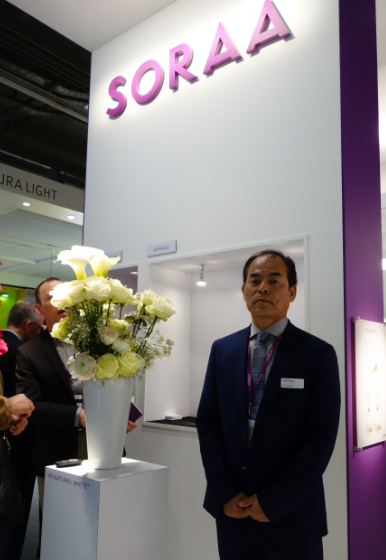 |
|
Soraa founder and Nobel laureate in Physics, Shuji Nakamura. (All photos courtesy of LEDinside) |
GaN on GaN LEDs
Soraa, the leading GaN-on-GaN LED manufacturer, showcased its products at Light+Building 2016. Company founder and Nobel Laureate in Physics Shuji Nakamura also attended the show, and stressed GaN-on-GaN LEDs are capable of creating the perfect LED light source. The company’s violet emitting LEDs are made from GaN substrates, which hence gives it the name GaN-on-GaN LEDs. This technology effectively lowers lattice mismatch, since it combines GaN semiconductor materials with GaN substrates, to achieve the resulting high luminous efficacy and significant surge in luminous efficacy.
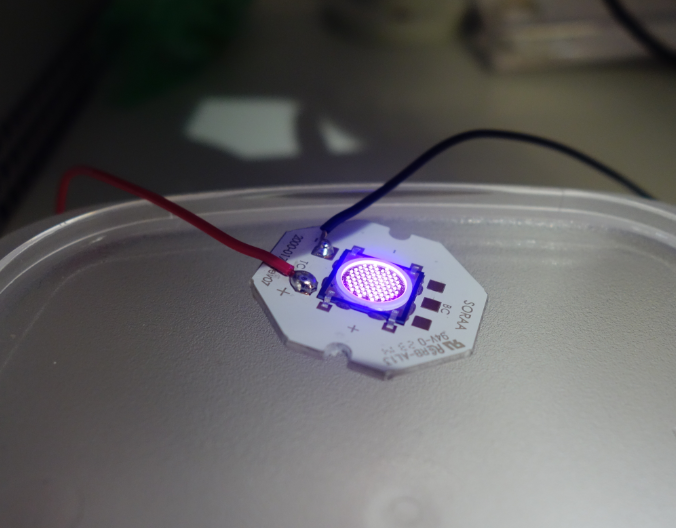 |
|
A violet light emitting LED chip using GaN-on-GaN technology.
|
Moreover, Soraa’s LED luminaires have distinctive features of uniform light beam color and brightness performance, its luminaires also offer flexibility in light form factors. The company has even developed optic accessory SNAP, a magnetic attachment of filters and lenses, which can be easily dismantled or assembled onto the luminaire. The filters and lens can change the color of the light and beam angle, which offers a high degree of flexibility in lighting designs that can meet different commercial market sector applications.
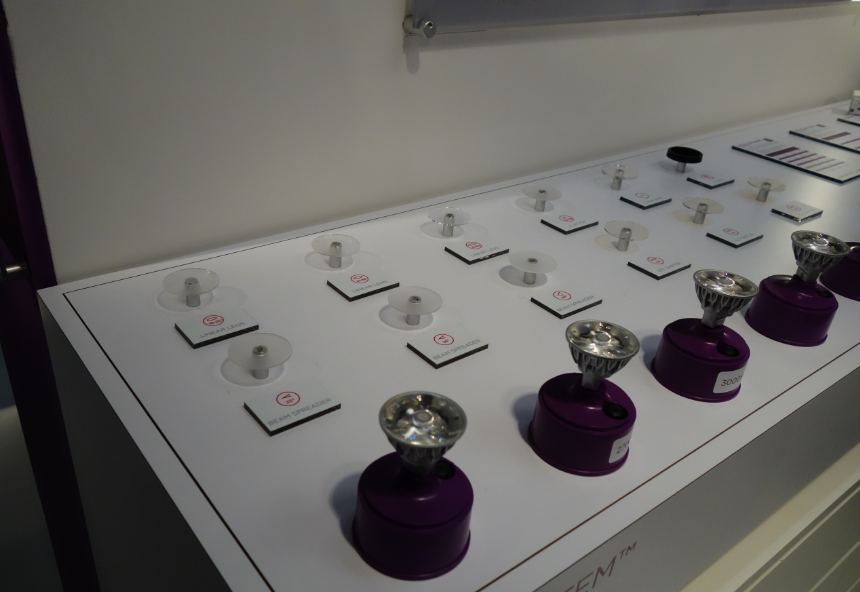
|
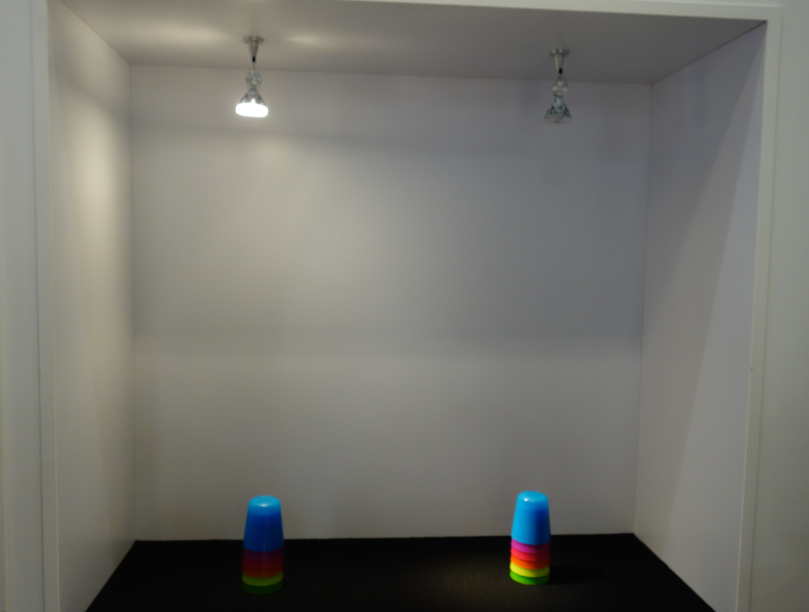
|
|
Top: Soraa’s magnetic attachment of filters and lenses accessory, SNAP, can easily transform the beam angle and color. Bottom: A LED luminaire’s beam angle can be accurately changed using SNAP lenses and filter accessories, the light can be directed to illuminate the desired object. |
GaN IC driver
Epistar displayed its GaN IC Driver at the lighting show last week, which attracted a lot of inquiries from visitors. Traditional silicon-based power devices or power adapters can be very large, and incremental power efficiency increases. If a GaN power device is used instead, it can greatly decrease the power device size, boost power efficiency, create and expand innovative applications.
Driver on board (DOB) modules commonly use traditional silicon-based power components, but it still requires many power resistors and capacitors to protect the electric circuit.
Since GaN can be driven at higher voltages, when GaN power devices are assembled onto DOB modules, it can greatly reduce the size and rid resistors and capacitors needed to protect the device.
Manufacturers challenge maximum LED luminous efficiency
At the show, LED manufacturers displayed their highly efficient LED product portfolio, ranging from low power LEDs to Chip on Board (COB) products. Manufacturers were testing the limits of luminous efficiency with their new products, but it could be observed the resulting maturing LED technology implied companies efficiency performances were close to each other.
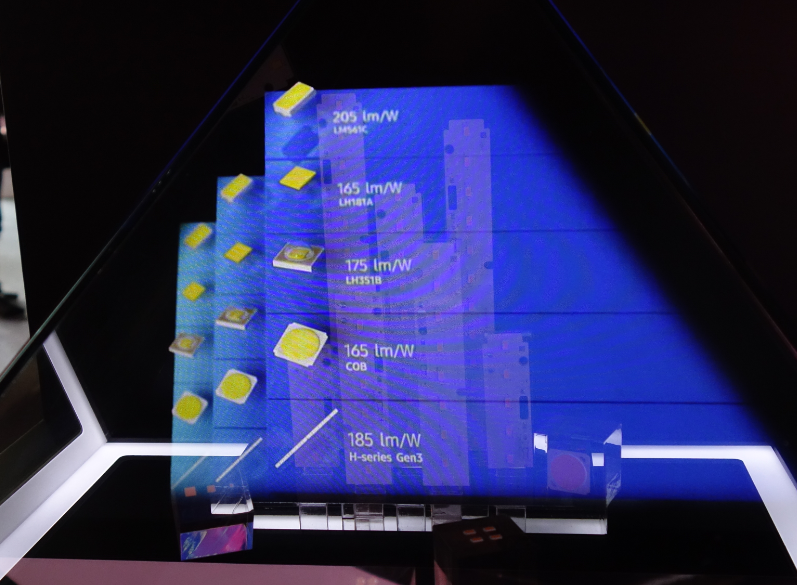 |
|
Top: Samsung LED displayed its high luminous efficiency products, which represented most vendors technology advancements.
|
Emerging mid-power LED technology is the rise of 200 lm/W LEDs on the market. LED manufacturers including Everlight, Seoul Semiconductor, and Samsung LED displayed mid-power LEDs that reached luminous efficiency of 200 lm/W. All these manufacturers claimed their 5630 LED products launched this year will reach 220 lm/W efficiency.
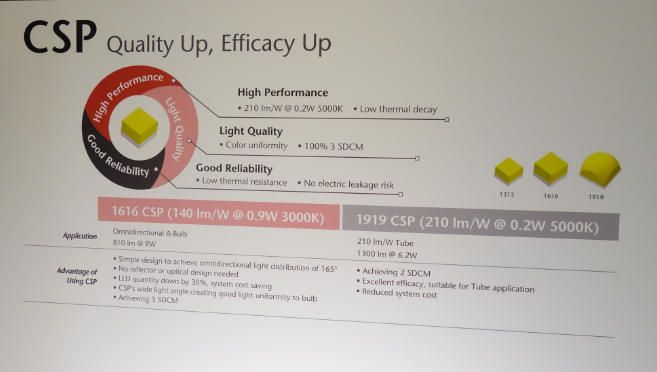 |
|
Lextar’s 0.2W CSP LED can reach a luminous efficiency of 210 lm/W, while its 0.9W CSP LED performance is about 140 lm/W.
|
Each manufacturer released CSP LED product portfolio, currently 1W CSP LED performance is mostly in the 140 lm/W range, including Nichia’s Direct Mountable Chip (DMC) series, and Lextar’s 1616 CSP LED.
Lextar’s 0.2W CSP LED can reach a luminous efficiency of 210 lm/W, while its 0.9W CSP LED performance is about 140 lm/W.
LEDinside also observed more manufacturers launching CSP LED module products aimed to replace COB LEDs.
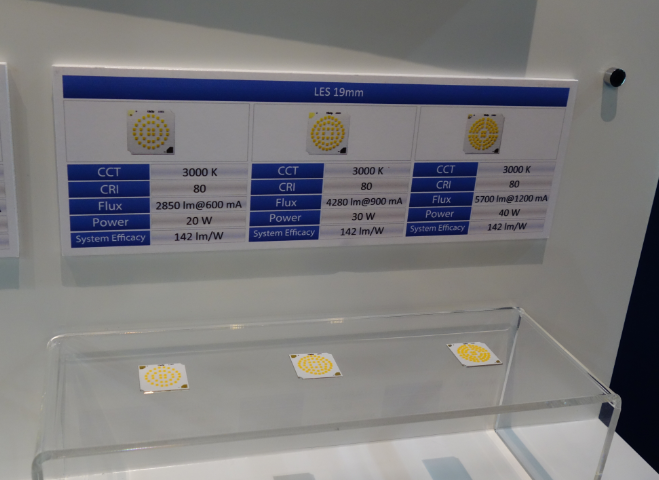 |
|
Epistar's CSP LED product portfolio. |
Epistar’s CSP LED modules can be used to make 20-40W modules, which offers clients an alternative to COB LEDs.
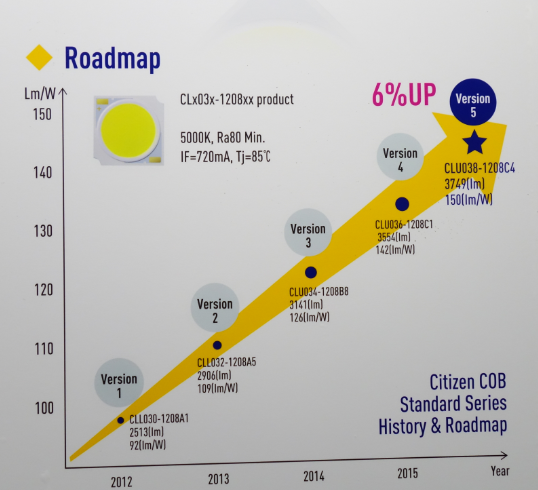 |
|
Citizen's COB LED roadmap. |
Citizen’s roadmap indicates its planning to release a fifth generation COB LED that has lumen flux of 3,748 lm and a luminous efficiency of 150 lm/W.
Manufacturers that do not make compromises in light quality
Due to intense
LED price wars, some LED manufacturers have chosen to move into high end markets to differentiate their products from general competition. For instance the Silicon Valley based U.S. manufacturer Xicato displayed its light module that utilizes remote phosphor technology is effective in delivering a color tolerance performance of within one to two step MacAdam ellipse. The company market position is in the boutique market, hence its products are mostly used by high-class lighting brands in the European lighting market.
 |
|
XICATO’s marketing strategy was rather creative, and seemed to be inspired by Marvel Comic characters. The brand was turned into lighting hero XICATO Man that battles different lighting issues, which were represented as different villains. |
The lighting industry is also increasingly aware of temporal light artefacts (TLA) issues caused by poor quality lighting and flicker, many LED manufacturers at the lighting show displayed related solutions. Xicato and Soraa both launched flicker-free LED luminaires, a simple way to detect whether a light flickers switching your smartphone to camera mode and check whether ripples appear in the image. Certain groups are more sensitive to flicker in light sources and can be more affected by low rate flicker, such as children, people with autism, migraine patients, and epileptics. Working under flickering lights for long hours also accelerates eye fatigue.
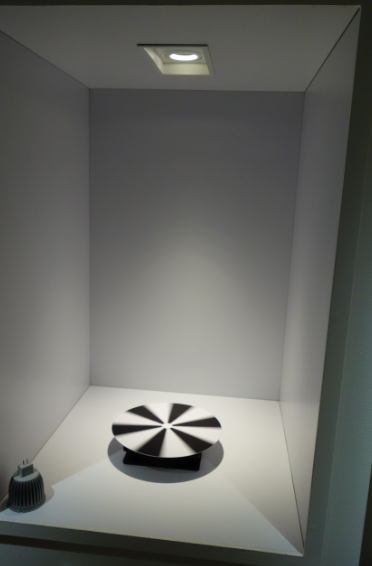 |
|
Another way to test whether a light is prone to flicker is from observing a fast spinning plate. |
Soraa uses a two stage structure framework electric circuit to create a flicker-free LED light source.
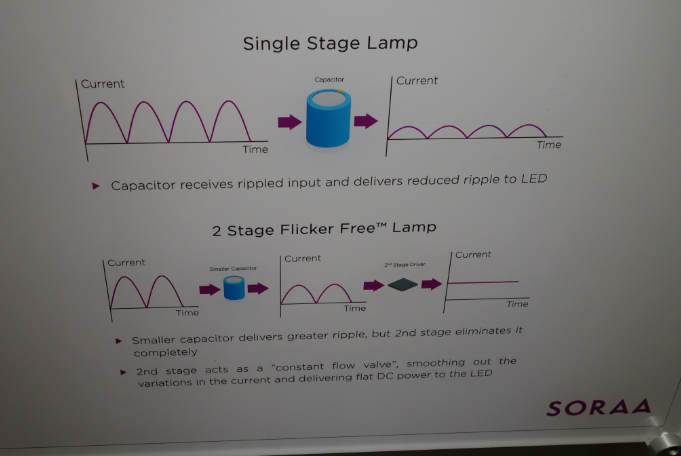 |
|
A diagram of Soraa's two stage flicker free lamp design. |
Manufacturers need to be on the watch of infringing LED filament patents
LED filament bulbs are spreading in the European market this year, a trend that was evidently observed at this year’s show. Previously, Asian manufacturers have mostly been displaying filament bulbs, but now European luminaire manufacturers have also been showcasing these products. There is also a wider selection of products, with most filaments paired with dimmable properties indicating European consumers still prefer traditional incandescent bulbs. However, many LED manufacturers have filed LED filament patents, leading to numerous related lawsuits in the past years.
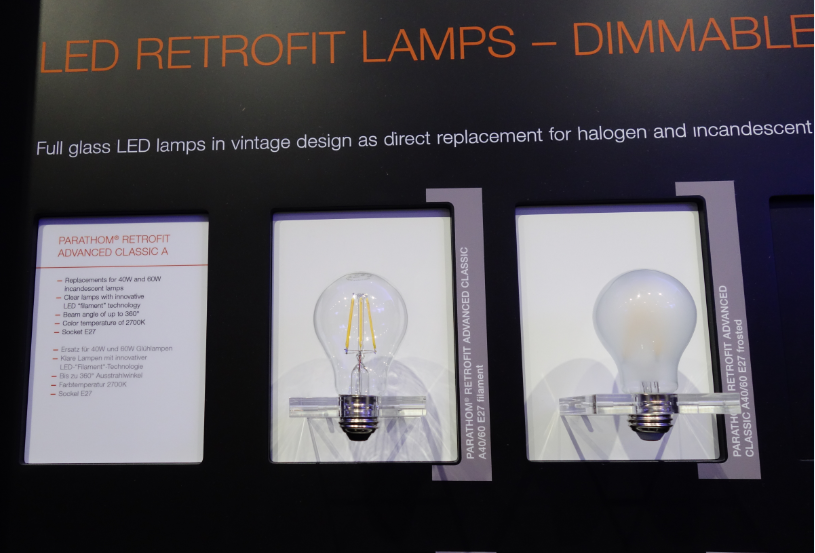 |
|
Osram displayed a dimmable E27 filament bulb. |
Current LED filament designs mostly involve different LED filament arrangements to achieve omnidirectional lighting, various types of gases are also injected into the light bulb to raise the thermal dissipation effect and extend the filament lifetime. LED filament manufacturing mostly involves placing the LED chip on different types of substrates, including sapphire, glass or ceramic. Substrates in general emit light from both sides, or are used for thermal dissipation.
 |
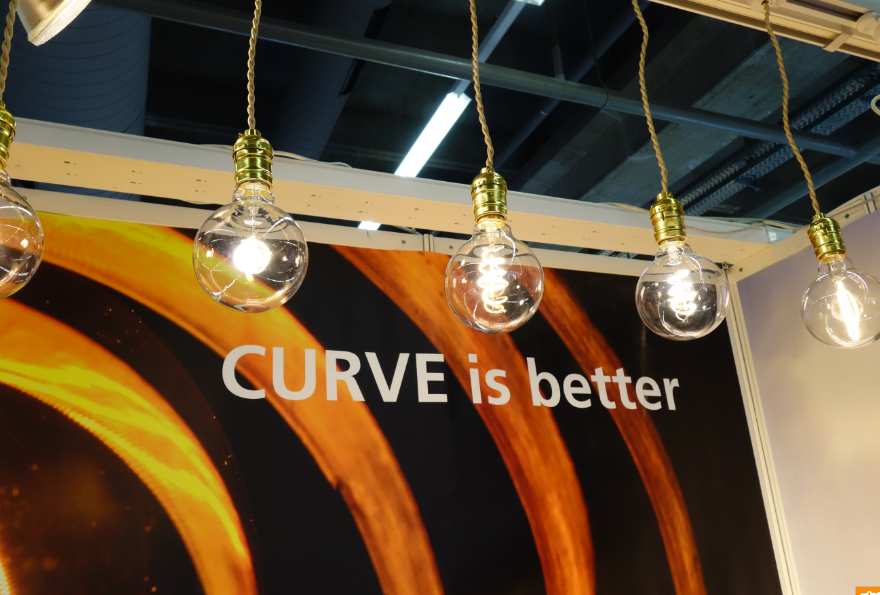 |
|
Top: Liquidleds booth. Bottom: Filament LED bulbs featured by Liquidleds follow the concept "Curve is better." |
LEDinside also observed at the show some manufacturers are placing the LED chips on flexible transparent substrates. Taiwanese manufacturer Liquileds Lighting for instance displayed a flexible filament light, highlighted “Curve is better”. The company is also molding the flexible LED filament into different shapes, so it closely resembles incandescent bulbs. Many visitors showed interest in its products at the show.
|
|
 |
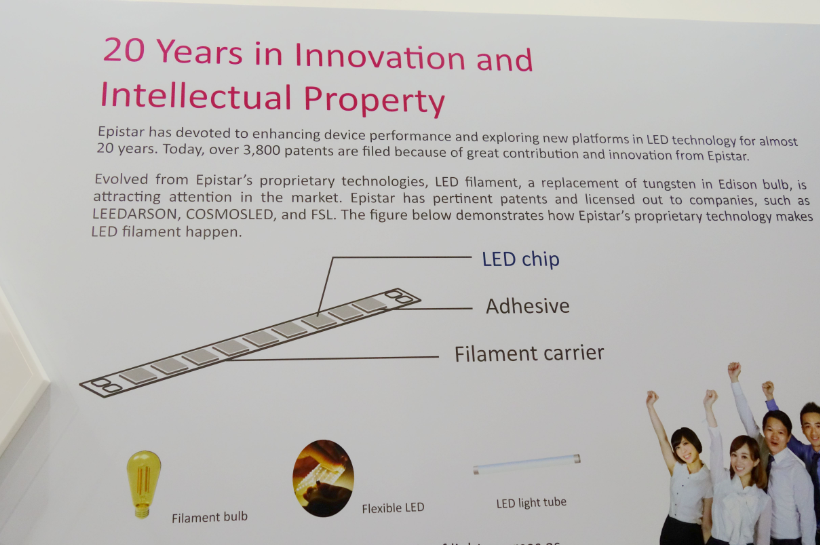 |
|
Top: Epistar LED filaments showcased at Light+Building 2016. Bottom: A diagram of Epistar's LED filament patent and filament technology.
|
Epistar is increasingly valuing its filament LED patent, and has licensed its filament LED to Cosmosled, Leedarson and FSL.
Manufacturers value niche lighting markets
Osram was one of the few LED manufacturers to display advanced IR LED solutions at the show, including biosensors, retina recognition and other sensors. Retina recognition systems are currently the most common and safest biosensors, and far more accurate than fingerprint recognition, since it is capable of recognizing 2,000 different data points compared to 100 data points in fingerprint recognition.
IR LED market has very wide market applications including image sensors, movement detection, photointerrupters, proximity switches, proximity sensors, bio recognition, photoplethysmogram (PPG), and other applications. In the future, IR LED mobile device applications could include data security, health management and other value adding applications. The market’s profitability holds great market potential, and can spur IR LED market development.
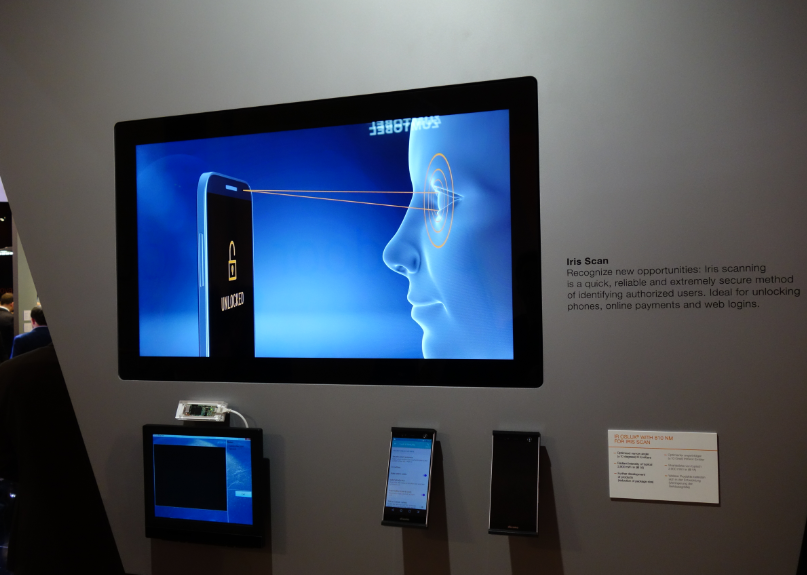 |
|
Osram releases IR LED iris recognition sensor. |
Osram displayed a biosensor device capable of detecting pulse, and level of oxygen in the blood stream. The biosensor can be used in various wearable devices.
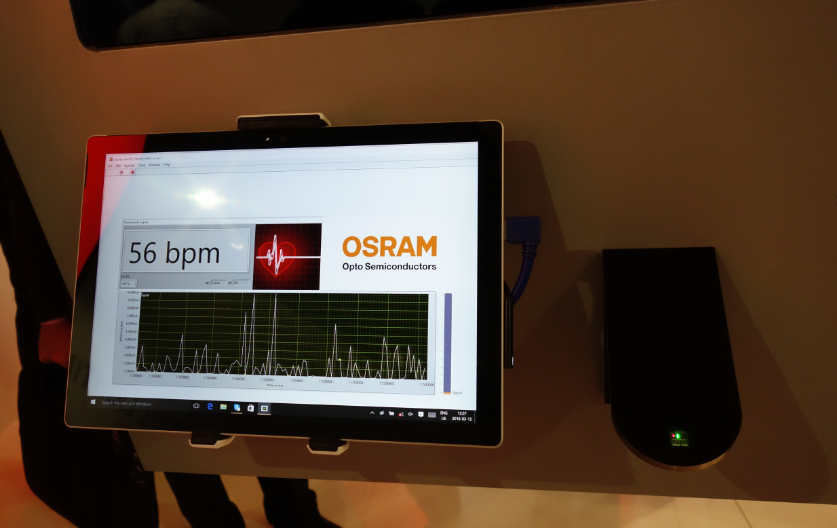 |
|
Osram's IR LED for measuring pulse and blood oxygen levels. |
To conclude, at the Light+Building 2016 lighting show, LEDinside observed several major trends. In the mid-power LED sector, luminous efficiency has reached 200 lm/W, there are also more CoB products on the market. Manufacturers such as Soraa are improving light quality in its luminaires with GaN-on-GaN technology, and XICATO is targeting the higher end market. The growing presence of filament LED bulbs on the market has also spread from Asia to Europe, and manufacturers should beware of related patents. Finally, niche markets will become an increasingly important market sector this year.





 CN
TW
EN
CN
TW
EN






